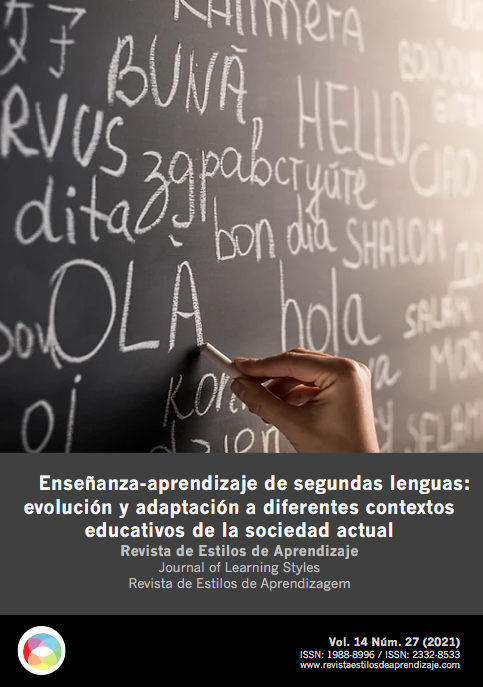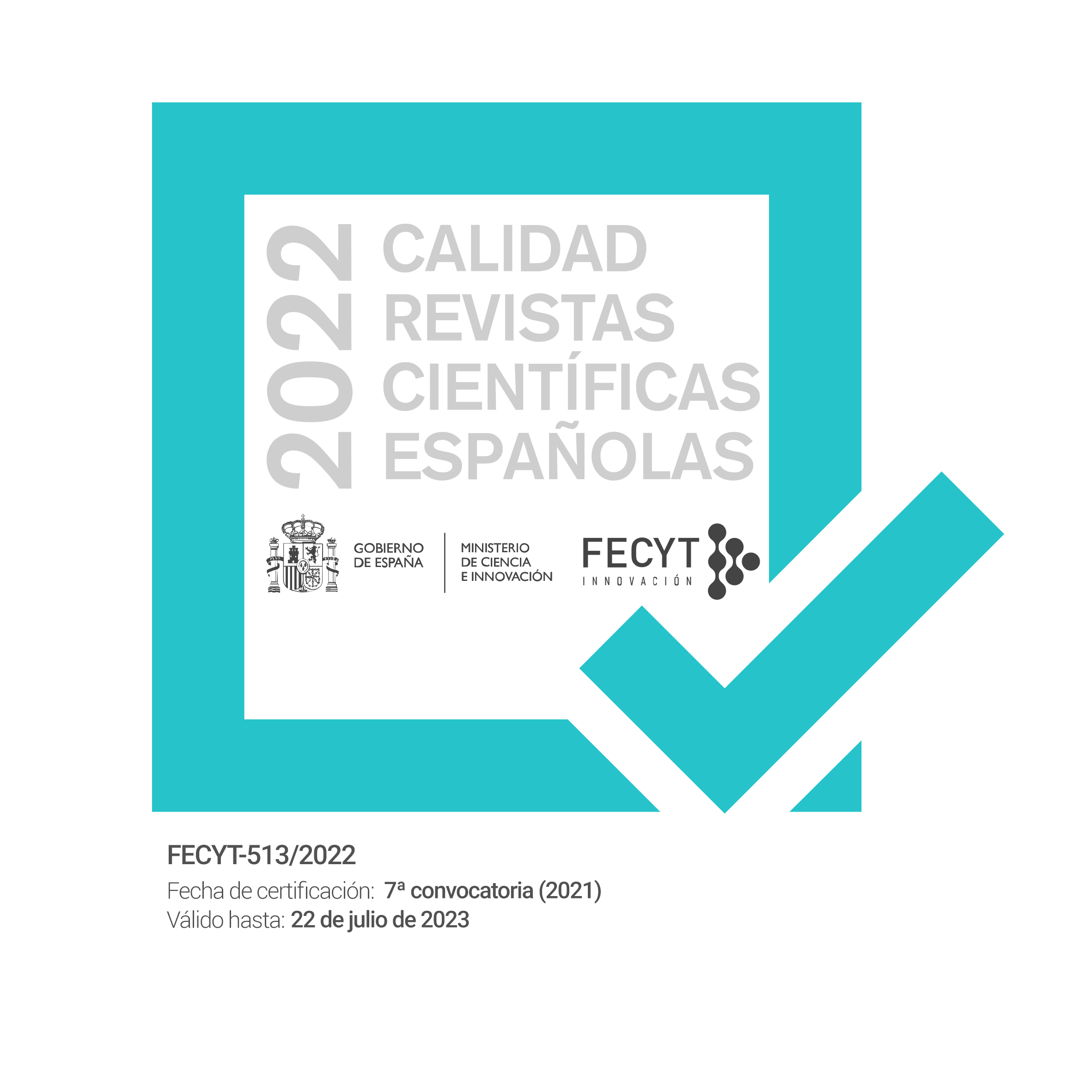What does it mean to be deaf at school? Reflections on inclusive and bilingual education based on the CORALSE corpus
DOI:
https://doi.org/10.55777/rea.v14i27.2819Keywords:
Deaf Collective, Inclusión, Virtual bilingual education., Equality education, Sign languageAbstract
Despite the fact that UNESCO has defended the need for an inclusive education based on the right people have to a quality and equal education, standard schools in Spain are far from being considered inclusive. As regards deaf population, educational inclusion depends on the recognition of sign languages and and on the assumption of a bilingual-bicultural model.
Starting from this concept of inclusion, we will analyze the situation of inclusive education in Europe, with special reference to Spain; then, we will characterize bilingual education and the role of LSE in educating deaf people. Finally, we will use the answers to two questions that are collected in the CORALSE corpus - “How is a school for the deaf different from an integration school?”; “How has being deaf affected you at school, work and social level?” -, to answer the question that this work poses. Our final aim is to analyze, from a mixed method design, the perception that deaf people who use sign language have of the education of the deaf before and now through their personal experience and its comparison with the current reality.
Downloads
References
Alonso Baixeras, P. at al. (2003). Libro Blanco de la Lengua de Signos Española en el Sistema Educativo. Madrid: CNSE.
Alonso Baixeras, P. et al., (2006). Propuestas curriculares orientativas de la Lengua de Signos para las etapas educativas de Infantil, Primaria y Secundaria. Madrid: CNSE.
Báez, I. y Fernández-Soneira, A. (2015). El grado de LSE en la universidad española: lingüística y traducción e interpretación de la LSE, en Báez y Otero (Eds.), Buscando respuestas en lengua de signos. Experiencias docentes con LSE como base de enseñanza. Lugo: Axac, 183-195.
Báez, I. y Fernández-Soneira, A. (2016). ¿Por qué son necesarios los estudios filológicos de la LSE? Una reflexión desde la Universidad de Vigo. Ponencia presentada en la Jornada CNLSE de intercambio y análisis profesional universitario. Recuperado de https://www.youtube.com/watch?v=hmYB58DFW7Q&list=PLHfLt3UTyN9NdudAlF21oRskYj_ky9PYX&index=9
Báez, I., Fernández-Soneira, A. y Freijeiro, E. (2016). CORALSE: diseño de un corpus de lengua de signos española, en Moreno, A & C. Pérez, C. (Eds.), CILC2016. EPiC Series in Language and Linguistics, vol. 1, 111-120. DOI: https://doi.org/10.29007/r1rt
Báez I., González-Montesino, R., Bao-Fente, M. y Longa, B. (2020). Los informantes de un corpus de lengua de signos española: tecnológico, representativo y con portabilidad: CORALSE. Estudios interlingüísticos, 8, 13-32. Disponible en: https://estudiosinterlinguisticos.com/numero-8-2020/
Bao-Fente, M. (2017). El portafolio europeo de todas las lenguas en la educación infantil y primaria: un recurso plural para mejorar y modificar las actitudes lingüísticas hacia la lengua de signos española. (Tesis Doctoral). Universidade de A Coruña.
CNLSE (2014). Informe de la situación de la lengua de signos española. Madrid: Real Patronato sobre Discapacidad.
Decreto 198/2014, de 5 de septiembre, por el que se establece el currículo de la Educación Primaria en la Comunidad Autónoma de la Región de Murcia. Recuperado de https://www.borm.es/services/anuncio/ano/2014/numero/11264/pdf?id=713895
Decreto 220/2015, de 2 de septiembre de 2015, por el que se establece el currículo de la Educación Secundaria Obligatoria en la Comunidad Autónoma de la Región de Murcia. Recuperado de https://www.borm.es/services/anuncio/ano/2015/numero/9315/pdf?id=735576
Franco, D. y Nogueira, R. (2011). Nuevos escenarios para la educación inclusiva: el proyecto ABC de atención al alumnado sordo, en Navarro, J. (Coord.) Diversidad, Calidad y Equidad Educativas. Murcia: Consejería de Educación, Formación y Empleo. Recuperado de https://diversidad.murciaeduca.es/publicaciones/diversa2011/docs/17.pdf
Gómez Chaves. B. (2019). A educación bilingüe lingua de signos/lingua oral na Educación Primaria. (Trabajo Fin de Grado). Universidade de Vigo.
González-Montesino, R. (2020). El reto de enseñar y aprender interpretación signada en tiempos de coronavirus. Revista de Estilos de Aprendizaje, vol. 13 (Especial), 17-31. Recuperado de http://revistaestilosdeaprendizaje.com/article/view/2237
González-Montesino, R. y Espada, R. (2020). Espacios universitarios de aprendizaje inclusivos, bilingües y multimodales: el caso del alumnado sordo signante. Revista de Estilos de Aprendizaje, 13 (25), 70-83. Recuperado de http://revistaestilosdeaprendizaje.com/article/view/1519
Gorrotxategui, M. (2018). Protecting and promoting sign language in Europe. Informe del Committee on Equality and Non-Discrimination (Council of Europe). Recuperado de http://assembly.coe.int/nw/xml/XRef/Xref-DocDetails-EN.asp?FileID=25133&lang=EN
Hill, J. (2013). Language ideologies, policies and attitudes toward signed languages, en R. Bayley, R. Cameron y C. Lucas (Eds.). The Oxford Handbook of Sociolinguistics. Oxford: Oxford University Press, 680-697.
Kyle, J. y Allsop, L. (1997). Sign on Europe: A research project on the status of sign language in Europe. Bristol: Centre for Deaf Studies, University of Bristol and European Union of the Deaf.
Leeson, L. (2006). Signed languages in Education in Europe: a preliminary exploration. Ponencia impartida na Intergovernmental Conference Language of Schooling: towards a Framework for Europe, pp. 1-16. Recuperado de https://rm.coe.int/09000016805c73d7
Ley 27/2007, de 23 de octubre, por la que se reconocen las lenguas de signos españolas y se regulan los medios de apoyo a la comunicación oral de las personas sordas, con discapacidad auditiva y sordociegas. Recuperado de https://www.boe.es/eli/es/l/2007/10/23/27
Ley Orgánica 3/2020, de 29 de diciembre, por la que se modifica la Ley Orgánica 2/2006, de 3 de mayo, de Educación. Recuperado de https://www.boe.es/eli/es/lo/2020/12/29/3
Morales, E. (2008). Características generales del bilingüismo inter-modal (lengua de signos / lengua oral). Comunicación presentada en el Curso Las lenguas de signos como lenguas minoritarias: perspectivas lingüísticas, sociales y políticas, Universidad Internacional Menéndez y Pelayo, Barcelona.
Pereira, Z. (2011). Los diseños de método mixto en la investigación en educación: Una experiencia concreta. Revista Electrónica Educare, XV (1), 15-29. DOI: https://doi.org/10.15359/ree.15-1.2
Plaza-Pust, C. (2012). Deaf education and bilingualism, en R. Pfau, M. Steinbach y B. Woll (eds.). Sign Language. An International Handbook. Alemania: De Gruyter Mouton, 949-979.
Stumpf, M. Rossi (2008). A educação bilíngue para surdos: relatos de experiências e a realidade brasileira, en R.M. De Quadros y M. Stumpf (orgs.). Estudos Surdos IV. Petrópolis, RJ: Arara Azul, 426- 450.
Swanwick, R. (2016). Deaf children's bimodal bilingualism and education. Language Teaching, 49 (01), 1-34. DOI: 10.1017/S0261444815000348
UNESCO (2009). Directrices sobre políticas de inclusión en la educación. París: Organización de las Naciones Unidas para la Educación, la Ciencia y la Cultura. Recuperado de: https://unesdoc.unesco.org/ark:/48223/pf0000177849_spa.
UNESCO (2017). Guía para asegurar la inclusión y la equidad en la educación. París: Organización de las Naciones Unidas para la Educación, la Ciencia y la Cultura. Recuperado de: https://unesdoc.unesco.org/ark:/48223/pf0000259592
Downloads
Published
How to Cite
Issue
Section
License
By submitting the original, the author(s) declare that they are aware of and accept, in full, the privacy policy as well as the copyright of the Learning Styles Magazine.
The Learning Styles Magazine offers free and open access to its content, completely free of charge, in order to bring scientific research to its readers and society in general. All digital contents are free and open access and are published under a Creative Commons license:

Rights are granted under the Creative Commons Reconocimiento-NoComercial-SinObraDerivada 4.0 Internacional (CC-BY-NC-ND 4.0)
The Learning Styles Magazine is an open access journal. Publication of articles or reviews in the Journal does not entitle you to any remuneration. For authors as well as readers, the journal is free Creative Commons Reconocimiento-NoComercial-SinObraDerivada 4.0 Internacional (CC-BY-NC-ND 4.0).
With this licence, the reproduction and dissemination of the contents of the magazine for educational, social and knowledge transmission purposes is permitted, without any profit motive in mind, provided that the source and authorship are not modified. The licence granted to Learning Styles Magazine allows the copying and distribution of the magazine's contents, as long as the authorship of the work is recognised, correctly specifying the author and the publishing entity. The work may not be used for commercial purposes, nor may it be altered, transformed or generated from this work.
The publication of articles or reviews in the Journal does not give the right to any remuneration.
The Learning Styles Journal invites the author/authors to increase the visibility and scope of their articles published by re-disseminating them in:
- Web spaces and personal networks, as well as in scientific meetings and forums
- Open institutional archives in Universities, educational repositories and Research Centres.
- Academic and scientific networks (Researchgate, Academia.edu, Plubons, etc.)
All these spaces and publications must include all the bibliographic data of the publication.

























